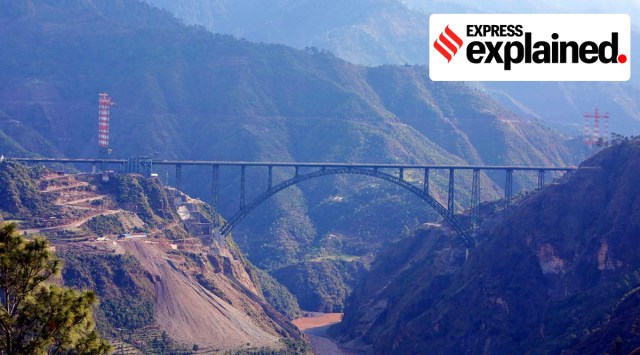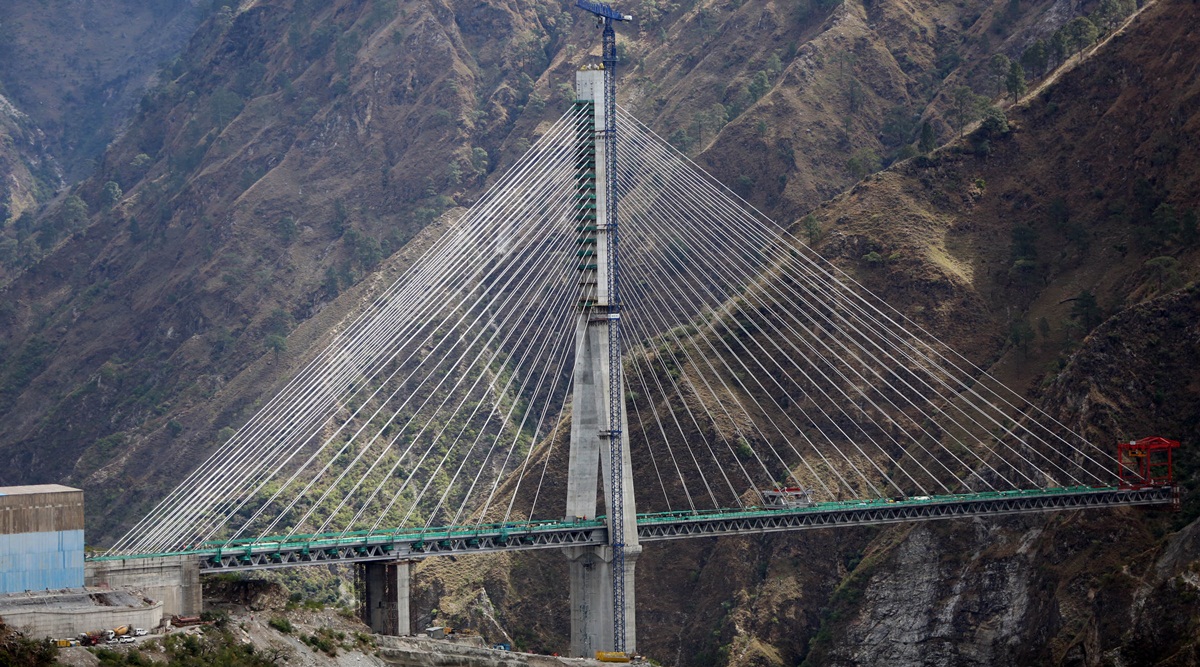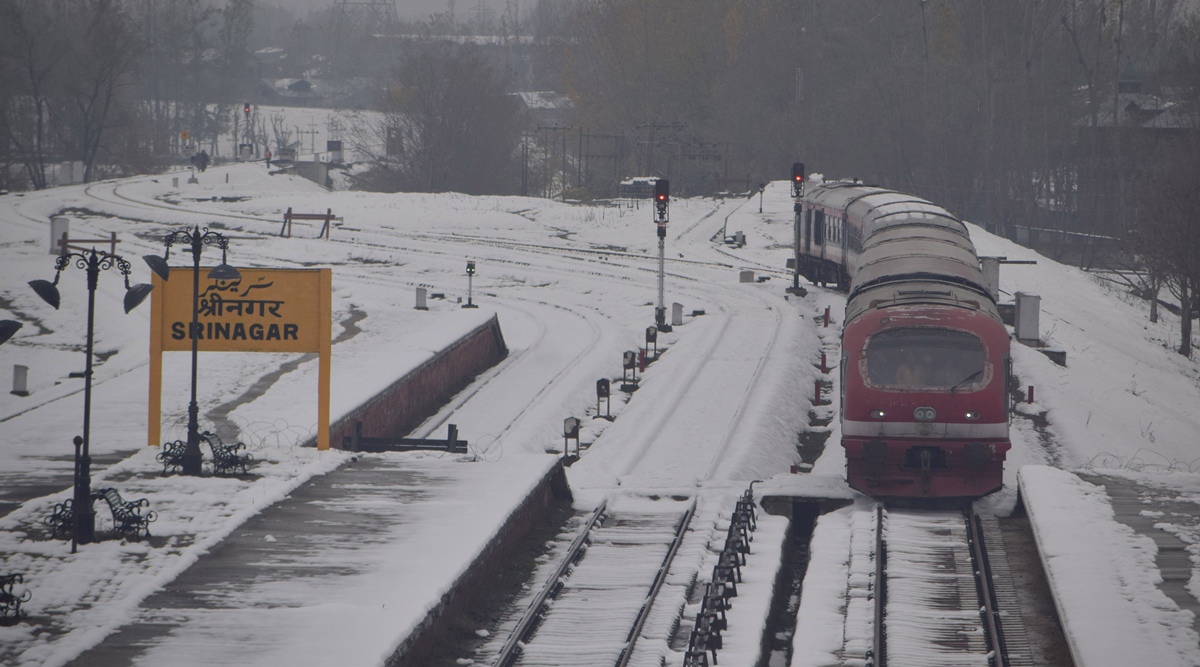Tracking the train to Kashmir: How the Vande Bharat is set to transform commute in the Valley
In less than a year, Vande Bharat Expresses could be running between Jammu and Srinagar, revolutionising the transportation of people and goods in the Union Territory, and connecting the Kashmir Valley more closely than ever before with the rest of India.
 The Chenab railway bridge, the highest railway bridge in the world, with its arch soaring 35 m higher than the Eiffel Tower. (Express photo by Gajendra Yadav)
The Chenab railway bridge, the highest railway bridge in the world, with its arch soaring 35 m higher than the Eiffel Tower. (Express photo by Gajendra Yadav) Railway Minister Ashwini Vaishnaw said last month that a Vande Bharat Express will run between Jammu and Kashmir “in December [2023] or January-February next year” after work on the 272-km Udhampur-Srinagar-Baramulla Railway Line (USBRL) is completed.
History of the project
The line will connect Srinagar and Baramulla in the Valley with the rest of the country by train, and will provide a reliable and cost-effective all-weather alternative to the Jammu-Srinagar national highway that is frequently shut down by landslides.
The first railway line in the former princely state of Jammu and Kashmir was built by the British in 1897 over a distance of 40-45 km between Jammu and Sialkot in the plains.
 The train will bring down the travel time between Srinagar and Jammu to between three and three-and-a-half hours from the five to six hours that it takes by road currently.
The train will bring down the travel time between Srinagar and Jammu to between three and three-and-a-half hours from the five to six hours that it takes by road currently.
In 1902 and 1905, a railway line was proposed between Rawalpindi and Srinagar along the course of the Jhelum, which would have connected the Kashmir Valley with the railway network of undivided India. But Maharaja Pratap Singh of Jammu and Kashmir was in favour of a Jammu-Srinagar line via Reasi, and neither project progressed.
After Partition, Sialkot went to Pakistan, and Jammu was disconnected from the rail network of India. Until the inauguration of the Pathankot-Jammu line in 1975, the railway station nearest to Jammu and Kashmir was Pathankot in Punjab.
In 1983, work began on a railway line between Jammu and Udhampur. The 53-km line, estimated to cost Rs 50 crore, was supposed to be completed in five years, but ultimately took 21 years and Rs 515 crore. The project, which was completed in 2004, has 20 major tunnels, the longest of which is 2.5 km long, and 158 bridges, the highest of which is 77 m high.
With work underway on the Jammu-Udhampur line, the government of Prime Minister P V Narasimha Rao in 1994 announced the extension of the line from Udhampur to Srinagar, and then Baramulla. This was the USBRL project, which was approved in March 1995 at an estimated cost of Rs 2,500 crore.
 Supported by 96 cables, the main section of the bridge is 473.25 m long.
Supported by 96 cables, the main section of the bridge is 473.25 m long.
The project got momentum after 2002, when Prime Minister Atal Bihari Vajpayee declared it a national project on account of its being among the most challenging works undertaken by the Indian Railways after Independence. The project cost has now ballooned to more than Rs 35,000 crore.
Challenges & innovations
The Himalayas are young, and the geologically unstable Shivalik Hills and Pir Panjal mountains lie in the seismically most active Zones IV and V. The terrain is difficult and sees heavy snow in winter, and presented serious challenges in the construction of bridges and tunnels.
More than 205 km of motorable roads — including a tunnel and 320 bridges — were built at a cost of Rs 2,000 crore to transport heavy machinery, construction material, and workers to construction sites, many of which were on sheer mountain faces at inclines of 70 degrees or more.
In view of the challenges in the construction of highly complex tunnels and huge bridges in unstable mountainous terrain, engineers of the Railways devised a novel Himalayan Tunneling Method (HTM), in which horseshoe-shaped tunnels were constructed instead of the usual D-shaped ones. In this method, the site comes down in a curve giving strength to the structure where the soil above it is loose.
 Trains are already running on the Udhampur-Katra and Banihal-Qazigund-Baramulla sections. (Express photo by Shuaib Masoodi)
Trains are already running on the Udhampur-Katra and Banihal-Qazigund-Baramulla sections. (Express photo by Shuaib Masoodi)
Safety and security
The broad gauge railway line will have 0.5-1 per cent ruling gradient, avoiding the need for bank engines in a mountainous region. The trains will be powered by diesel locomotives for now, but there is a provision for electrification in the future. Trains can run at speeds up to 100 km/h for the entire length of the journey.
All the major bridges, tunnels, and railway stations will be illuminated and have CCTV cameras. The track and tunnels have been designed to require as little maintenance as possible.
Development benefits
The train will bring down the travel time between Srinagar and Jammu to between three and three-and-a-half hours from the five to six hours that it takes by road currently. According to Railway Minister Vaishnaw, the Vande Bharat trains will allow people to travel from Jammu to Srinagar and return that same evening.
The train will benefit the people of Kashmir by facilitating hassle-free transport of goods such as apples, dry fruits, pashmina shawls, handicrafts etc., to other parts of the country in the shortest possible time and at lesser cost. The cost of transporting items of daily use to the Valley from elsewhere in the country is also expected to go down significantly.
Four cargo terminals will be built between Banihal and Baramulla; land has been identified for three of these terminals.
- 01
- 02
- 03
- 04
- 05






































